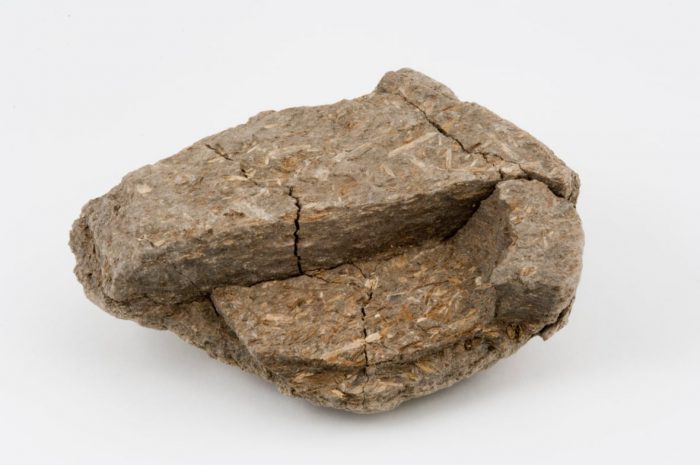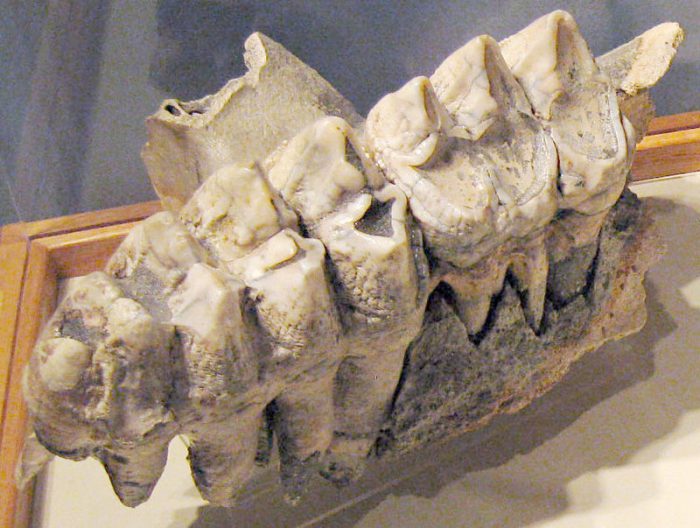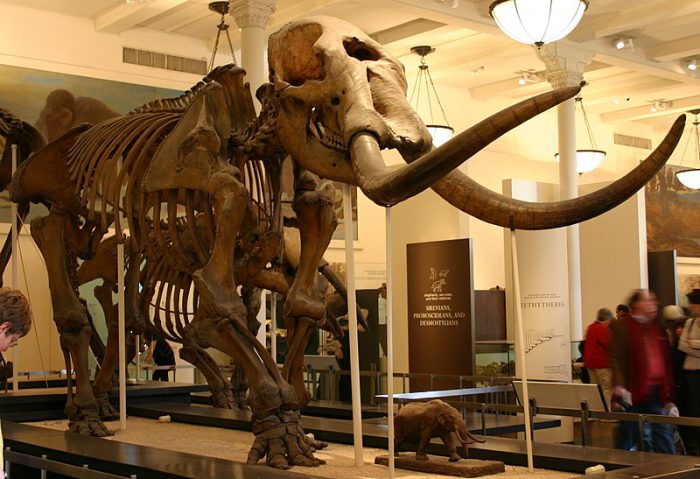When you see animal poop, what's your first thought? Probably something like, Look out! Don't step in it!
And you know what? That instinct is pretty spot on. After all, not only is poop pretty gross and bad-smelling, it can also be a host to all sorts of yucky bacteria that don't belong anywhere near your own body. There's a reason animals get rid of it!
And yet, give that same poop some time in the ground—say a few thousands years—and it becomes a very valuable paleontological find. Especially if it was left by a now extinct animal.
For example, a mastodon.
That's what paleontologists discovered when they unearthed a pair of 75,000 year-old mastodon skeletons in Nova Scotia. This collection of valuable bones was paired with some equally valuable preserved mastodon poop!
Stinky, but exciting

Behold! Ancient poop! (Nova Scotia Museum)
Interestingly, this dig happened way back in 1991. According to the researchers who were at the original dig, the poop was pretty much as stinky as it was the day it was left. Which is, um, great? (The scientists believe that this is because layers of mud kept oxygen from ever reaching the dung.)
In addition to being stinky, it was an excellent window into both the diet of the mastodon and nature of the animal's habitat. Recently, Ph.D. student at the University of Alberta, Scott Cocker, was given the chance to run tests on the fece himself and the results were detailed and amazing!
Bark and bugs

An example of the spiked molars of the mastodon. (Wikimedia Commons)
Mastodons may be related to other pachyderms like elephants and the extinct mammoths, but its diet was quite different. Those beasts have flatter ridged molars made for grinding grasses and leaves into edible mulch. But mastodons had molars lined with cone-shaped spikes—these powerful teeth were designed to crush branches and bark into food.
No surprise then that Cocker found both birch and spruce trees in the mastodon poop. But that wasn't all. He also found algae and freshwater sponges, suggesting that the animal may have also snacked in or near wetland areas, like swamps. And he even found remains of a bark beetle—the animal was likely in the wrong place at the wrong time as the mastodon was chomping on a tree.
All in all, this study is testimony to the fact that nearly everything increases in value as it ages. Even poop!
 Skeletons are not the only way to learn about the lives of extinct animals ... (Wikimedia Commons)
Skeletons are not the only way to learn about the lives of extinct animals ... (Wikimedia Commons)










😛
I hat poop but thank you my I know that is not my poop ew so ew ?????????????